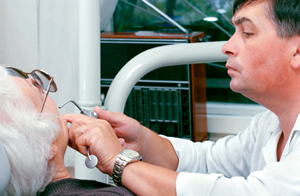A root canal usually results from not taking care of a cavity when it starts. The longer you allow a cavity to grow, the more damage it causes. The cavity can lead to damaged nerve tissue and infection.
At some point, a simple filling is not enough. The cavity will spread to the root of the teeth and the gums. That is when a root canal becomes necessary.
The Root Canal Procedure
The goal of the root canal procedure is to remove all the damage to the tooth. The procedure removes the pulp of the tooth and the damaged nerve tissue. It also removes any bacteria that cause the infection in the tooth. The root canal procedure removes more of the tooth and tissue than a normal cavity requires. The work is more extensive, and there are more risks for problems during recovery if not taken care of properly.
Aftercare Instructions
It is essential to follow the aftercare instructions following a root canal. Not protecting the teeth can lead to a variety of other problems. In addition, because part of the root canal procedure involves dealing with the infection, medications are needed to help fight the disease. Medicines on the site of the root canal can help resolve it entirely.
Because the medicine placed on the root canal site needs to remain in place, a temporary filling seals the area after the procedure. The temporary filling can stay for about a week until the infection is completely cleared and a permanent filling is put in place. While the temporary filling is in place, it is essential to continue brushing carefully to allow the tooth to heal.
A root canal is a surgical procedure, meaning a person needs to make sure they give their body the chance to recover. That means taking steps to protect the tooth and ensuring you do not damage the surgical site until it heals.
Contact our office to schedule an appointment to learn more about this or any other oral health issue.

